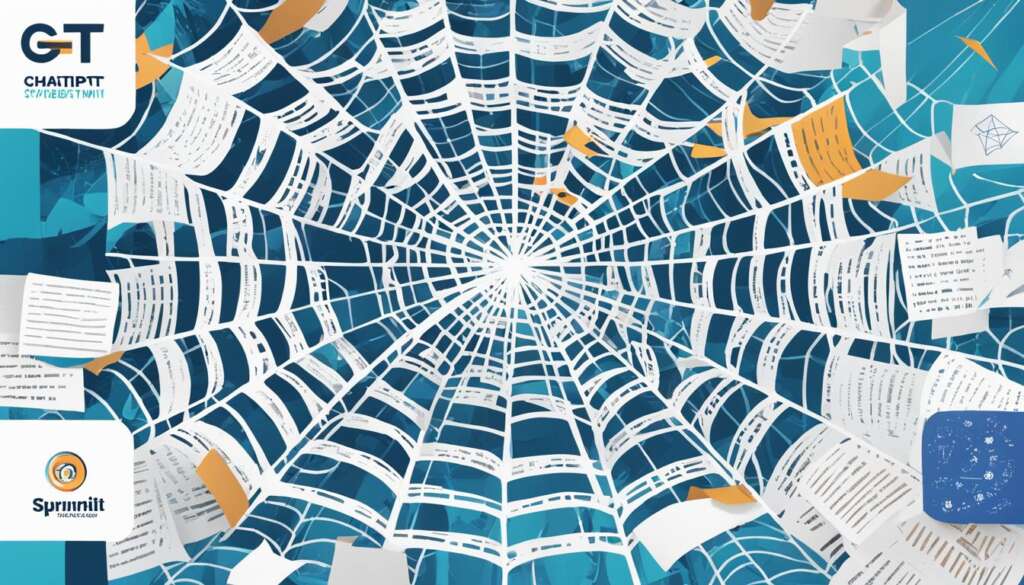Table of Contents
Turnitin is a widely used plagiarism detection software that educational institutions rely on to check for plagiarism in student assignments. With the rise of advanced AI language models like ChatGPT developed by OpenAI, there is an increasing concern about detecting AI-generated content. In this article, we will explore how Turnitin addresses this challenge and maintains academic integrity.
The Role of Turnitin in Plagiarism Detection
Turnitin plays a crucial role in upholding academic integrity by utilizing advanced techniques to detect plagiarism in student assignments. While its primary focus is on comparing student work with a vast database of previously submitted papers, Turnitin goes beyond traditional methods to identify instances of AI-generated content. This is made possible through the implementation of NLP (Natural Language Processing) algorithms and machine learning, which analyze the text and identify patterns associated with AI-generated writing.
Turnitin’s comprehensive plagiarism detection process involves comparing the submitted assignments not only against its extensive database but also against various sources on the internet, ensuring a thorough examination of similarities. This multidimensional approach helps educators identify potential instances of plagiarism and maintain the integrity of the academic system.
“Turnitin’s advanced plagiarism detection techniques, powered by NLP algorithms and machine learning, enable educational institutions to uncover instances of AI-generated content. This adds a crucial layer of detection in today’s technologically advanced academic landscape,” said Dr. Emily Thompson, an expert in digital education.
Although the plagiarism detection aspect of Turnitin is not solely driven by artificial intelligence, its new AI writing indicator enhances the software’s capabilities in recognizing AI-generated content. This indicator provides instructors with valuable insights into the presence of AI-assisted composition. It generates an overall percentage indicating the extent of AI-generated content within a document and presents a detailed report highlighting specific segments predicted to be written by AI. This feature enables educators to make informed decisions based on accurate information.
The AI writing indicator developed by Turnitin has demonstrated an impressive accuracy rate of up to 98%. Since its launch in April 2023, it has provided educators with a valuable tool to combat the challenges posed by AI-generated content and ensure academic integrity.
In summary, Turnitin’s integration of NLP algorithms, machine learning, and AI writing indicators empowers educators to effectively detect AI-generated content in student assignments. By employing these advanced technologies, Turnitin continues to be at the forefront of plagiarism detection, safeguarding the integrity of academic work and promoting responsible academic practices.
| Key Features of Turnitin in Plagiarism Detection | |
|---|---|
| Comparing student assignments to a comprehensive database | |
| Checking for similarities and potential instances of plagiarism | |
| Utilizing NLP algorithms and machine learning techniques | |
| Introducing the AI writing indicator for enhanced detection | |
| Achieving an accuracy rate of up to 98% |
Turnitin’s AI Writing Indicator
Turnitin’s AI writing indicator is a powerful tool designed to detect AI-generated content with an impressive accuracy of up to 98%. This innovative feature was launched in April 2023 to address the increasing prevalence of AI-assisted writing in academic submissions. The AI writing indicator seamlessly integrates into Turnitin’s comprehensive Similarity Report, providing instructors and administrators with valuable insights into the presence of AI-generated content.
The AI writing indicator goes beyond flagging AI-generated content; it also identifies AI-assisted content, offering a comprehensive assessment of the level of AI involvement in student assignments. By doing so, Turnitin provides a holistic view of the use of AI in academic writing.
When generating a Similarity Report, the AI writing indicator calculates the overall percentage of AI-generated content in the document. This percentage serves as a clear indicator of the extent to which AI has been utilized in the writing process. Instructors and administrators can then utilize this information to evaluate the originality and authenticity of the submitted work.
In addition to the overall percentage, the AI writing indicator also highlights specific text segments within the document that are predicted to be written by AI. These segments are presented in a detailed report, allowing instructors to examine and assess the AI-generated content on a granular level. This feature offers invaluable insights into the specific areas of the assignment where AI has been utilized.
It’s important to note that the AI writing indicator is exclusively accessible to instructors and administrators. Students do not have direct access to this indicator or its associated score. This ensures that the indicator remains a tool for instructors to assess AI-generated content while maintaining academic integrity.
With the implementation of the AI writing indicator, Turnitin demonstrates its commitment to staying at the forefront of plagiarism detection technology. By providing accurate identification of AI-generated content, Turnitin enables educators to maintain academic standards and uphold the principles of originality and authenticity in student work.
Other AI Detection Software and Tools
In addition to Turnitin, there are several AI detection software and tools available in the market that can help in identifying AI-generated content. These tools use advanced algorithms and techniques to analyze text and detect patterns indicative of AI-generated writing. Let’s explore some of these software and tools:
Winston AI
One notable AI detection software is Winston AI. It specializes in detecting AI content generated with ChatGPT and other AI language models. Employing sophisticated algorithms, Winston AI can effectively identify and flag instances of AI-generated content, ensuring academic integrity is maintained.
Originality AI
Another reliable AI detection tool is Originality AI. It has achieved an impressive accuracy rate of 96% in a test data set. With its advanced analysis capabilities, Originality AI helps educators identify AI-generated content in student assignments, enabling fair evaluation and assessment.
Jasper AI
Jasper AI is an AI content generator that provides a platform for creating on-brand and high-quality content. While it doesn’t focus on AI detection, it offers a valuable resource for content creators and businesses looking to produce engaging and professional AI-generated content.
WordAI
WordAI is another AI content generation tool that caters to the need for high-quality, on-brand content. It utilizes cutting-edge natural language processing techniques to generate text that mimics human writing style and tone, making it suitable for various content creation purposes.
Copy.ai
Copy.ai is a popular AI content generator with millions of users worldwide. It leverages powerful algorithms to assist users in generating compelling and creative content for diverse applications. Copy.ai can be an efficient tool in content creation, saving time and effort while maintaining quality.
These AI detection software and tools, along with Turnitin, contribute to the academic community’s efforts to promote academic integrity and combat the use of AI-generated content for unethical purposes.
Limitations and Challenges of AI Detection
While Turnitin’s AI writing indicator proves to be highly accurate in detecting AI-generated content, achieving 100% accuracy poses challenges due to false positives. AI detection software often mistakenly identifies human-written text as AI-generated, leading to inaccurate results. This issue is not exclusive to Turnitin; it is inherent in all AI detection software.
The continuous advancements in AI language models, such as GPT-4, further complicate the detection process. AI detection methods struggle to keep up with the evolving sophistication of AI-generated content, making it more difficult to identify instances of plagiarism.
“The battle against AI-generated content is an ongoing one, and we strive to stay ahead of the curve.”
AI detection methods are constantly evolving to keep pace with these challenges. Researchers and developers are exploring innovative techniques and algorithms to enhance detection accuracy and reduce false positive rates. By incorporating advanced natural language processing (NLP) algorithms and machine learning models, AI detection software aims to improve its ability to distinguish between human-written content and AI-generated text.
Challenges in AI Detection
A few key challenges that AI detection software currently faces include:
- False Positives: False positive cases occur when genuine human-written content is mistakenly identified as AI-generated. This can be attributed to similarities in writing styles or the usage of specific phrases.
- Evolving AI Language Models: The continuous advancement of AI language models, such as GPT-4, introduces new complexities in detecting AI-generated content. As AI models become more sophisticated, AI detection methods must adapt to effectively identify plagiarized text.
- Unseen AI Detection Methods: Some AI detection methods currently in development may not yet be known to the public. These undisclosed techniques, often referred to as “black-box” methods, heighten the challenges of detecting AI-generated content.
Efforts are being made to address these challenges and improve the accuracy of AI detection methods. Researchers continue to collaborate and share insights in order to develop more robust mechanisms for identifying AI-generated content.
| Challenges | Solutions |
|---|---|
| False Positives | Refining algorithms to reduce false positive rates and improve the distinction between AI-generated and human-written content. |
| Evolving AI Language Models | Continuous monitoring and analysis of AI language models to identify new patterns and adapt detection methods accordingly. |
| Unseen AI Detection Methods | Promoting transparency and collaboration within the AI detection community to share knowledge and develop effective strategies. |

Other Methods to Identify AI-generated Content
In addition to AI detection software, instructors can employ various techniques to identify AI-generated content in student assignments. These methods involve analyzing the language, writing style, and adherence to specific guidelines.
Language Analysis
One effective method is to conduct a thorough language analysis of the text. AI-generated content often exhibits distinct patterns or phrases that are uncommon for students to use. By carefully examining the language used in the assignment, instructors can gain insights into whether the content was generated by AI or written by the student.
Writing Style Analysis
Another approach is to analyze the writing style employed in the assignment. AI-generated text may have a consistent tone, structure, or stylistic preferences that differ significantly from a student’s typical writing style. By comparing the assignment to the student’s previous work, instructors can identify inconsistencies or discrepancies that suggest the presence of AI-generated content.
Asking for Explanation
Instructors have the option to ask students to explain certain concepts or ideas in their assignments. This technique allows instructors to assess the student’s understanding of the content. AI-generated content may lack depth or coherence when students attempt to explain concepts they do not fully comprehend.
Adherence to APA Guidelines
In addition to language and writing style analysis, adherence to formatting guidelines, such as the APA guidelines, can also reveal potential use of AI. AI-generated content may lack proper citations or exhibit inconsistent formatting that deviates from the prescribed guidelines. Instructors can meticulously review the assignment for such inconsistencies to detect AI-generated content.
“The combination of language analysis, writing style analysis, and adherence to formatting guidelines can provide valuable insights into the presence of AI-generated content in student assignments.”
To visually represent the different methods to identify AI-generated content, the following table provides a concise overview:
| Methods to Identify AI-generated Content | How It Works |
|---|---|
| Language Analysis | Examining the language for distinct patterns or phrases uncommon to students |
| Writing Style Analysis | Comparing the writing style to the student’s previous work for inconsistencies or deviations |
| Asking for Explanation | Requesting students to explain concepts or ideas to assess their understanding |
| Adherence to APA Guidelines | Checking for proper citations and consistent formatting according to APA guidelines |
Conclusion
The responsible use of AI tools in academic writing is crucial for maintaining academic integrity and addressing the ethical implications of AI technology. While AI detection software like Turnitin plays a vital role in identifying AI-generated content, it is essential for students to understand that AI should not be seen as a substitute for critical thinking and genuine academic work.
Although AI can be a helpful tool for expressing ideas and enhancing writing, it cannot be considered fully original. Students must prioritize academic integrity by conducting their own research, analyzing information critically, and developing their unique perspectives and arguments. AI-generated content may lack the same depth of understanding and originality that genuine academic work requires.
As AI technology continues to evolve, AI detectors and detection methods will also advance to ensure academic integrity is maintained. However, it is imperative for students to adopt a responsible approach to using AI tools in their academic writing. This includes using AI as a complementary resource to their own intellectual efforts, being transparent about its use, and properly citing any AI-generated content.
By upholding academic integrity and using AI responsibly, students can navigate the ethical implications surrounding AI tools in academic writing. They can harness the benefits of AI technology while ensuring that their work remains genuine, thoughtful, and reflective of their own intellectual capabilities.
FAQ
How does Turnitin detect ChatGPT submissions?
Turnitin detects ChatGPT submissions by using its AI writing indicator, which analyzes the text and detects patterns of AI-generated writing. The indicator is included in the Similarity Report and can flag AI-generated content with up to 98% accuracy.
What is the role of Turnitin in plagiarism detection?
Turnitin is widely used in educational institutions to check for plagiarism in student assignments. It compares student work to a vast database of previously submitted work and other online sources, using NLP algorithms and machine learning to identify instances of plagiarism.
What is Turnitin’s AI Writing Indicator?
Turnitin’s AI Writing Indicator is a tool launched in April 2023 that detects AI-generated content, including content generated with ChatGPT. It provides an overall percentage of AI-generated content in the document and links to a report highlighting specific text segments predicted to be written by AI. Only instructors and administrators can see the indicator and its score in the report.
What are some other AI detection software and tools available?
Other AI detection software and tools include Winston AI, Originality.AI, Jasper AI, WordAI, and Copy.ai. These tools specialize in detecting AI content generated with ChatGPT and other AI language models, providing accurate detection of AI-generated content.
What are the limitations and challenges of AI detection?
Achieving 100% accuracy in AI detection is challenging due to false positives, where human-written text can be mistakenly identified as AI-generated. The continuous advancements in AI language models, like GPT-4, may make it more difficult for AI detection to detect AI-generated content. AI detection methods, including those used by Turnitin, are constantly evolving to overcome these challenges and ensure accurate detection.
Are there other methods to identify AI-generated content?
Yes, apart from using AI detection software, instructors can analyze the language and style of writing to identify AI-generated content. AI-generated text often has a distinct style and may use phrases or words uncommon for students. Instructors can also ask students to explain concepts or ideas in their own words and assess their understanding. Additionally, inconsistencies in adhering to formatting guidelines, such as APA guidelines, can reveal potential use of AI.
What should students consider when using AI tools in academic writing?
Students should prioritize academic integrity and understand the ethical implications of using AI tools. While AI can be a helpful tool for expressing ideas, it should not be seen as a substitute for critical thinking and academic work. AI-generated content cannot be considered fully original. As AI technology evolves, AI detectors and detection methods will also evolve to ensure academic integrity is maintained.







